While I have previously written about making whole muscle cures, I have learned a lot since my initial attempts which I chronicled at the time. As I am constantly learning and adapting methods, my next few posts will discuss some of the whole muscle cures that I have made more recently, and the specific protocols or recipes that I have used. If you are looking for an overview of meat curing, please refer back to my charcuterie page introduction.
Duck Prosciutto, or prosciutto d’anatra, is a delicious cured meat product made by curing duck breasts. It can be made a few different ways, two of which I will detail here.
Duck Prosciutto is a cured meat product that many suggest as an entry level cured meat. While that may be the case due to its small size and short curing time, the layer of fat on the breast as well as traditional casing methods can complicate things. In fact, my first duck prosciutto attempt was actually my first cured meat failure. I had uneven drying, and instead if using a method to even it out, I considered it a failure and threw it out.
(I now know better, and if any of my products have uneven drying or case hardening, I make sure that I vacuum seal them and leave them in a traditional refrigerator for an unspecified period of time until they have evened out. At this point, they can be rehung until they reach the desired water weight loss point.)
A traditional duck breast is part meat, with a thick layer of fat on one side.
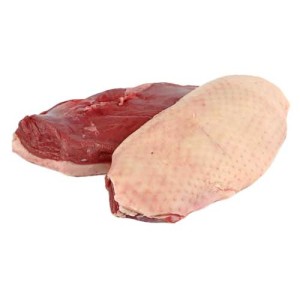 Because of the makeup of fat compared to protein, the fatty portion of the duck breast has less water to lose than the meat portion of the duck breast. This is important to know when deciding when a duck prosciutto is ready, since the target of 30% water weight loss might take longer than expected to reach (and in fact, may not be necessary depending on how much fat the cut really has!)
Because of the makeup of fat compared to protein, the fatty portion of the duck breast has less water to lose than the meat portion of the duck breast. This is important to know when deciding when a duck prosciutto is ready, since the target of 30% water weight loss might take longer than expected to reach (and in fact, may not be necessary depending on how much fat the cut really has!)
Method #1: Equilibrium Curing
Deciding on a spice cure for a duck prosciutto is 100% personal preference after the necessary additional of salt, and in my opinion, nitrates or cure #2 as I will refer to it from here on out. While some people use excess curing for duck prosciutto, I have switched over to using equilibrium curing completely. For more information on this, see the charcuterie introduction. This winter I decided to make two different duck prosciutto, one using more traditional bresaola spices and one that was a play on the French dish of duck l’orange.
Curing (2 weeks):
The duck breasts were mixed with the spice cure and vacuum sealed in a bag and allowed to equilibrate in a traditional refrigerator for the period of two weeks.
Casing (1 hour):
After the two weeks of curing was up, the duck breasts were washed off of all spices and patted dry.
They were cased in beef bungs, and wrapped in butchers netting.
If you refer to older posts, at this point, I used to do a fermentation stage for whole muscle cures. I have come to the conclusion that that is only really necessary for salami, and have stopped doing a fermentation stage for whole muscle cures.
Drying (1 month+, until 30% of weight is lost):
Temperature: 54F/12C, Humidity: 70-80% RH
After casing, the duck prosciutto was hung in the curing chamber at around 55F/12C and around 80% RH.
I have been keeping my humidity higher than I have in the past to allow to slower and more even weight loss, as well as to accommodate the cheeses that I have been keeping in the curing chamber. In this case, the traditional bresaola spiced duck breast reached 30% weight loss first and was pulled. The duck prosciutto l’orange style plateaued at a weight loss of ~25%, most likely due to its high fat content. It was pulled after it plateaued.
Tasting:
The taste test may be the best part of the whole project. The beef bung casing and netting is removed and the meat is rinsed with red wine or white vinegar (personal preference) to remove any mold that may have gotten through the casing on to the meat before being patted dry. The meat can be sliced with a deli slicer or by hand. Hopefully, the results will be heavenly.
The duck prosciutto was hand sliced with my new jamon knife, resulting in thicker slices than the deli slicer produces. Perfect for some late night duck prosciutto snacking.
Tasting of the traditional spiced duck prosciutto:
Tasting of the l’orange style duck prosciutto:
The duck prosciutto was stored in a vacuum sealed bag for snacking at a later date.
Method #2: Excess Curing
Previously, in order to make duck prosciutto I followed the method that is in a lot of the traditional literature. Excess curing is a method where the meat is packed into excess salt and spices, and allowed to cure for anywhere from 24-72 hours.
Curing: First, I did an excess salt/cure #2 and spice cure for 3 days.
Casing: Then, I wiped off then cure, and hung it in a cheesecloth casing for drying.
Drying (2 weeks+): Temperature: 54F/12C, Humidity: 70% RH
The duck breast was weighed in order to track the weight loss over time.
I tracked the weight loss over time and found that it stagnated at about 20% weight loss with some case hardening.
In order to even it out, I placed it under vacuum seal.
Tasting: After it spent some time under vacuum seal, it evened out and ended up absolutely delicious.
These are the two most common methods used to make duck prosciutto. Everyone finds methods that they prefer, and as discussed previously, I have switched to equilibrium curing and beef bungs for more even and replicable drying in the future. However, that is not to say that the excess curing method won’t work for you. Feel free to play around with your curing and create products that make you happy.
Disclaimer: Meat curing is a hobby that comes with inherent risks. We can all do things to limit this risk by educating ourselves about the process and the utilizing the safest known methods to create our products. This website is for educational purposes only, and all experimentation should be done at each individuals own risk.
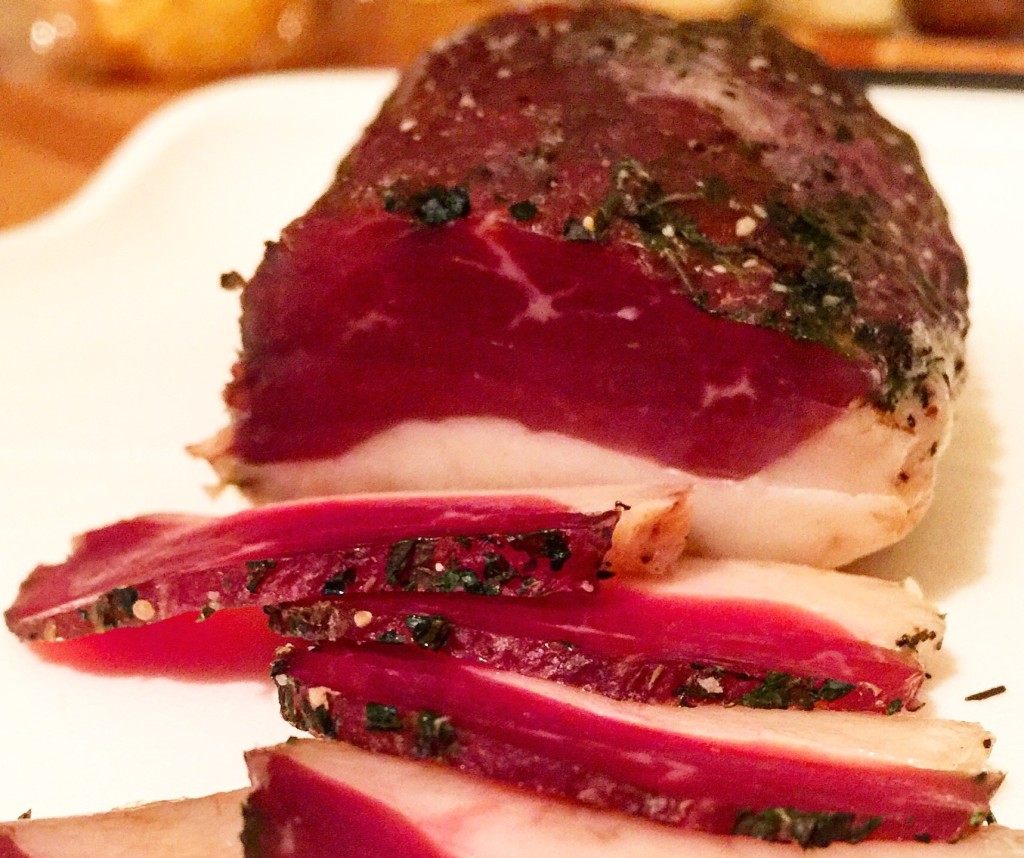
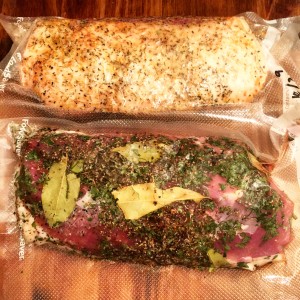
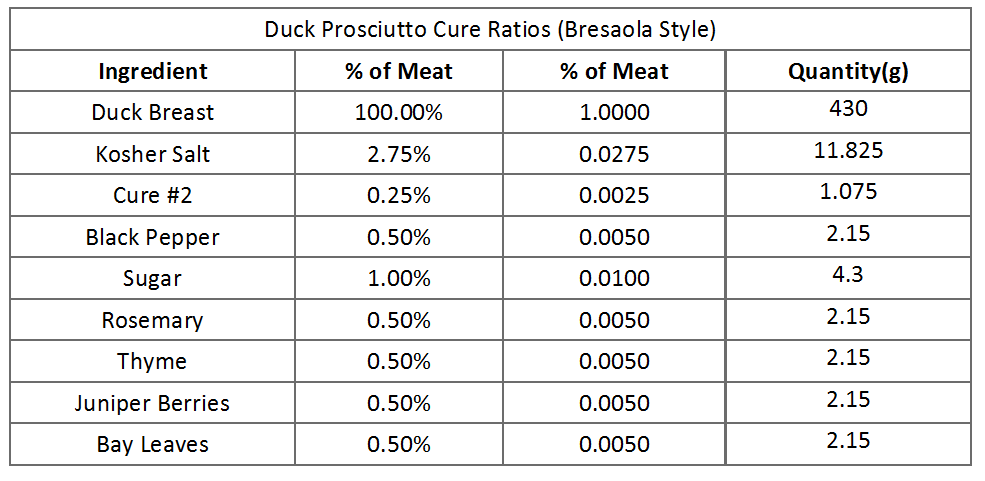
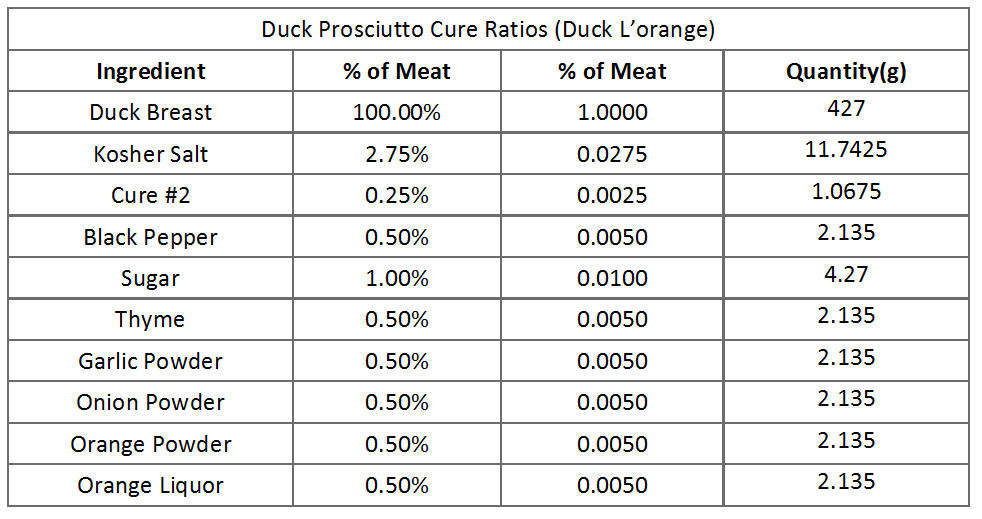
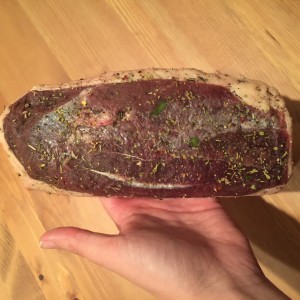
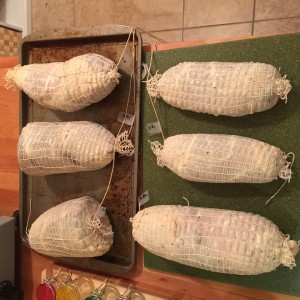


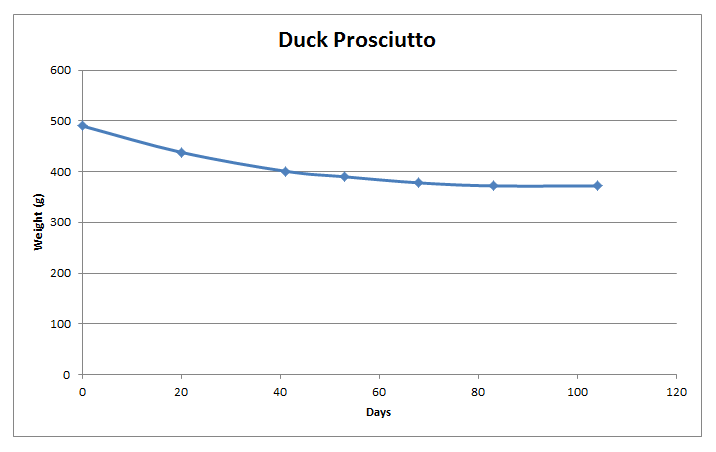

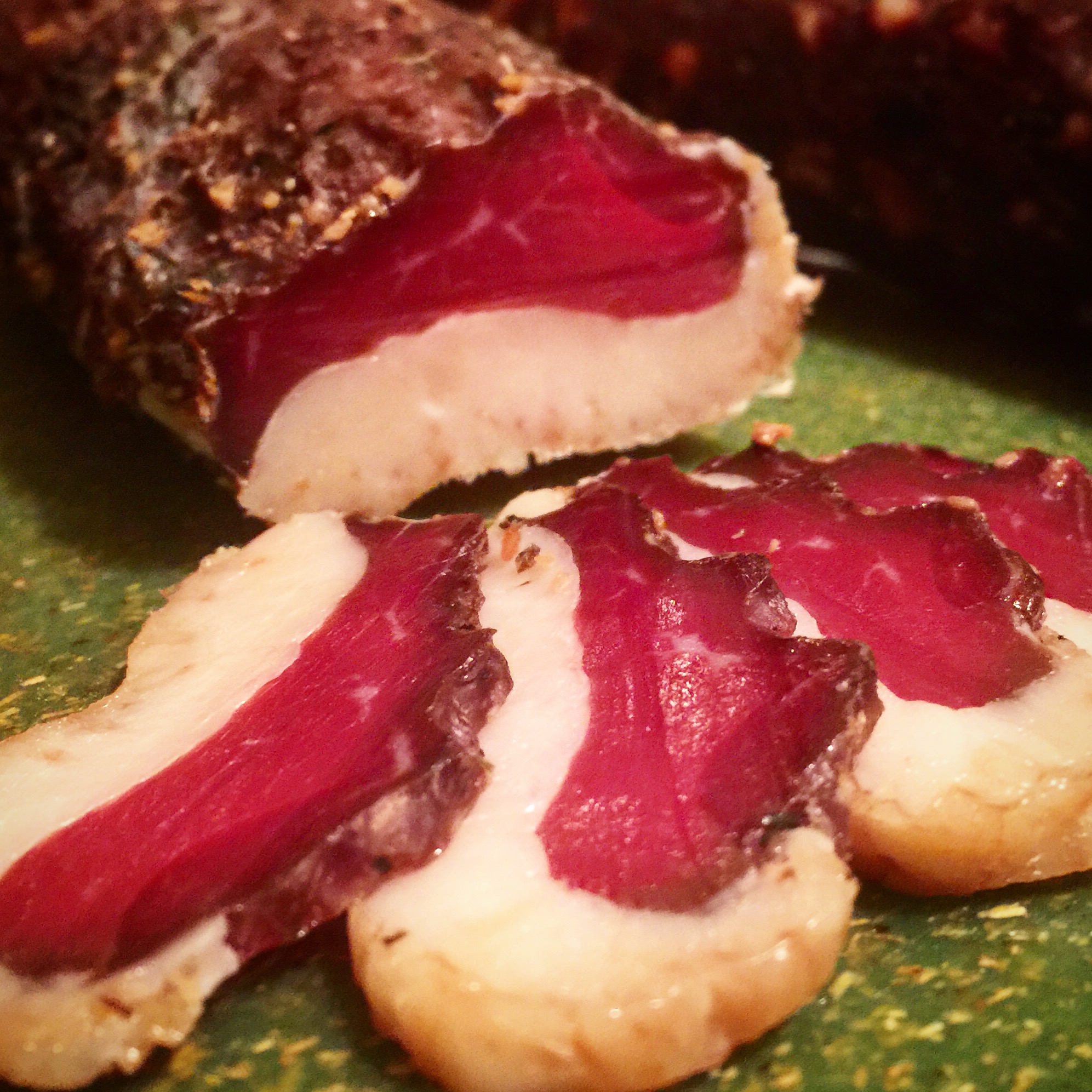


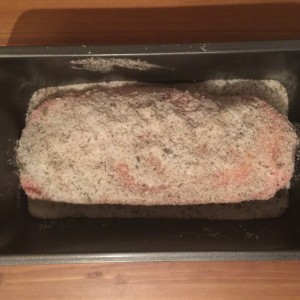
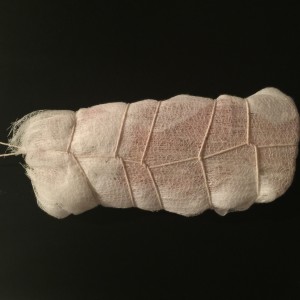
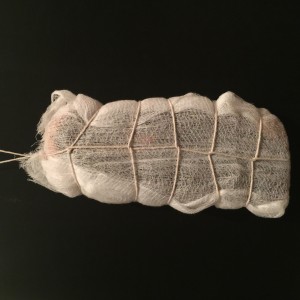
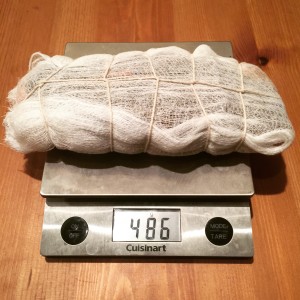
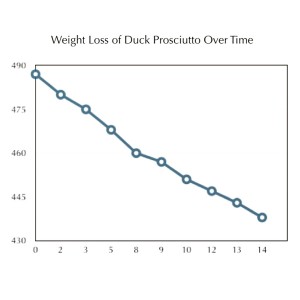
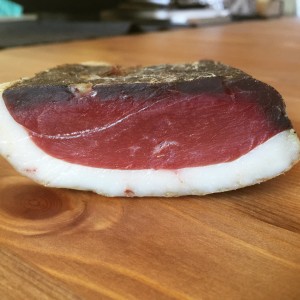
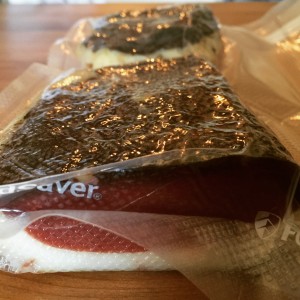
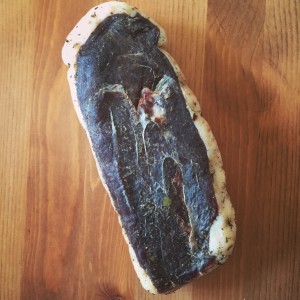
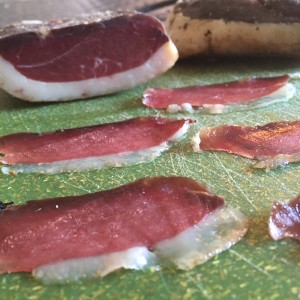
Thank you for put all this information together.
Just starting out. In a video i watched on a different website, the beef was pricked with a sausage pricker. Is this something you do? Do i need to do this?
thanks for your help
Yes, I prick all the salami before fermentation. You can also use toothpicks if you don’t have a sausage pricker.
awesome blog, many thanks.
I currently have 6 duck breasts curing (look identical to the size you have here) but cautious on the size of the butchers netting I should order to wrap them. I see they come in sizes like 12, 14,16, 20 24 and 28 ….
Can I ask which size you would consider appropriate ?
Sorry for the late response. I’m actually not sure which size would be best, but you could also consider tying them up with string yourself if you don’t have netting on hand. good luck!
I am attempting the excess method in my fridge with a bowl of water to introduce some humidity. I can feel how the duck breasts have hardened a bit. Many videos say 2-3 weeks or 30-40% weight loss. Is this weight loss from the duck’s original weight before the 24 hour salt cure, or from after the salt cure and before hanging? Thanks!
It can be either. It’s called the green weight when it’s from before the salt cure. Just make sure you don’t have case hardening, where the outside has lost a lot of weight quickly, while the inside remains raw.
For the excess curing method, are you willing to share the recipe for the cure. example did you use just salt or salt+sugar+flavor and or did you use Nitrates and how much? I made this once with just salt and thyme and loved it so much but wanted to add nitrates for the first time and worried I will use too little/too much.
Mine I just cheeseclothed and hung in uncontrolled basement, I got a little mold on a couple breasts I left too long, my next project will be a more controlled environment.
If you’re using nitrates I would suggest an equilibrium cure. Otherwise for excess I just used excess salt and spices, but I don’t love this method. The equilibrium cure ends up being a lot easier in the end.